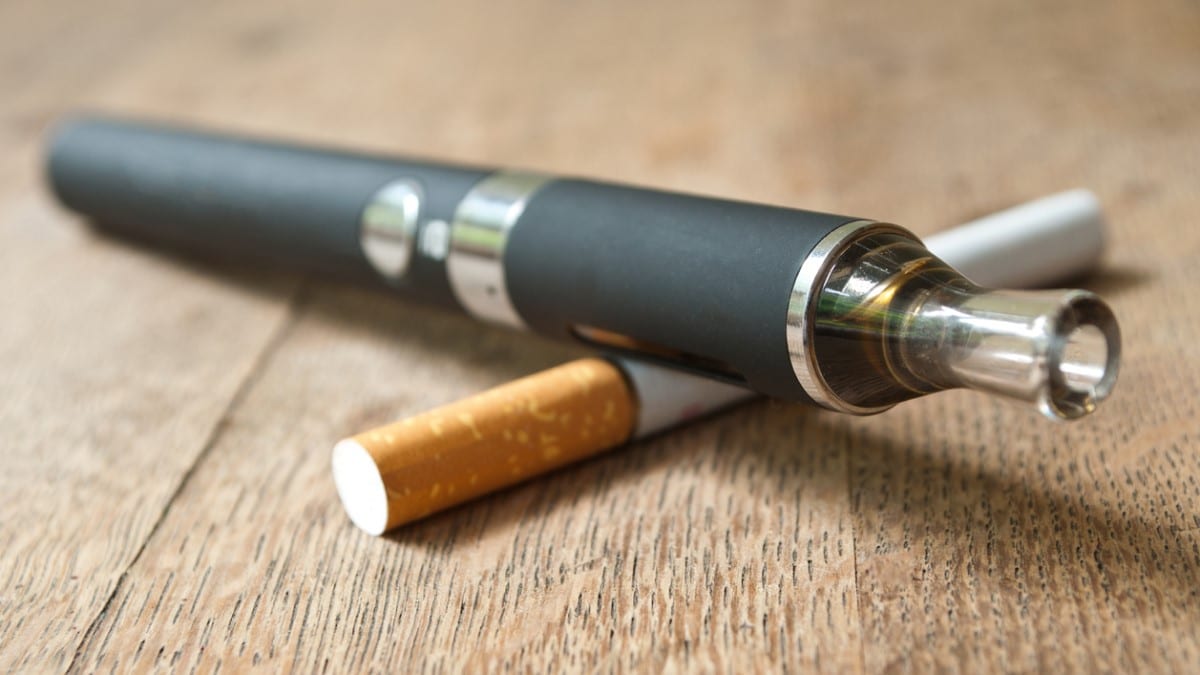Key points
- Cigarette smoking is the number one risk factor for lung cancer.
- Radon is another important cause of lung cancer in the United States.

Smoking
Cigarette smoking is the number one risk factor for lung cancer. In the United States, cigarette smoking is linked to about 80% to 90% of lung cancer deaths. Using other tobacco products such as cigars or pipes also increases the risk for lung cancer. Tobacco smoke is a toxic mix of more than 7,000 chemicals. Many are poisons. At least 70 are known to cause cancer in people or animals.
People who smoke cigarettes are 15 to 30 times more likely to get lung cancer or die from lung cancer than people who do not smoke. Even smoking a few cigarettes a day or smoking occasionally increases the risk of lung cancer. The more years a person smokes and the more cigarettes smoked each day, the more risk goes up.
People who quit smoking have a lower risk of lung cancer than if they had continued to smoke, but their risk is higher than the risk for people who never smoked. Quitting smoking at any age can lower the risk of lung cancer.
Cigarette smoking can cause cancer almost anywhere in the body. Cigarette smoking causes cancer of the mouth and throat, esophagus, stomach, colon, rectum, liver, pancreas, voicebox (larynx), lung, trachea, bronchus, kidney and renal pelvis, urinary bladder, cervix, and acute myeloid leukemia.
Smoke from other people's cigarettes, pipes, or cigars (secondhand smoke) also causes lung cancer.
Benefits of Quitting Smoking over Time
This animated infographic shows the positive changes the body experiences over time after quitting smoking.
Radon
Indoor radon is another important cause of lung cancer in the United States. Radon is a naturally occurring gas that forms in rocks, soil, and water. It cannot be seen, tasted, or smelled. When radon gets into homes or buildings through cracks or holes, it can get trapped and build up in the air inside. People who live or work in these homes and buildings breathe in high radon levels. Over long periods of time, radon can cause lung cancer.
The risk of lung cancer from radon exposure is higher for people who smoke than for people who don't smoke. But radon can cause lung cancer among people who have never smoked cigarettes. Learn how to test your home for radon and reduce the radon level if it is high.
Are You At Risk for Radon?
This video explains what radon is, how it can enter your home and cause lung cancer, and how to fix a radon problem if needed.
Other substances
Examples of substances found at some workplaces that increase risk include asbestos, arsenic, diesel exhaust, and some forms of silica and chromium. For many of these substances, the risk of getting lung cancer is even higher for those who smoke. Living in areas with higher levels of air pollution also increases the risk of getting lung cancer.
Personal or family history of lung cancer
If you are a lung cancer survivor, there is a risk that you may develop another lung cancer, especially if you smoke. Your risk of lung cancer may be higher if your parents, brothers or sisters, or children have had lung cancer. This could be true because they also smoke, they live or work in the same place where they are exposed to radon and other substances that can cause lung cancer, or because of an inherited genetic mutation.
Radiation therapy to the chest
Cancer survivors who had radiation therapy to the chest are at higher risk of lung cancer.
Diet
Scientists are studying many different foods and dietary supplements to see whether they change the risk of getting lung cancer. There is much we still need to know. We do know that people who smoke and take beta carotene supplements have increased risk of lung cancer. Also, arsenic and radon in drinking water (primarily from private wells) can increase the risk of lung cancer.
